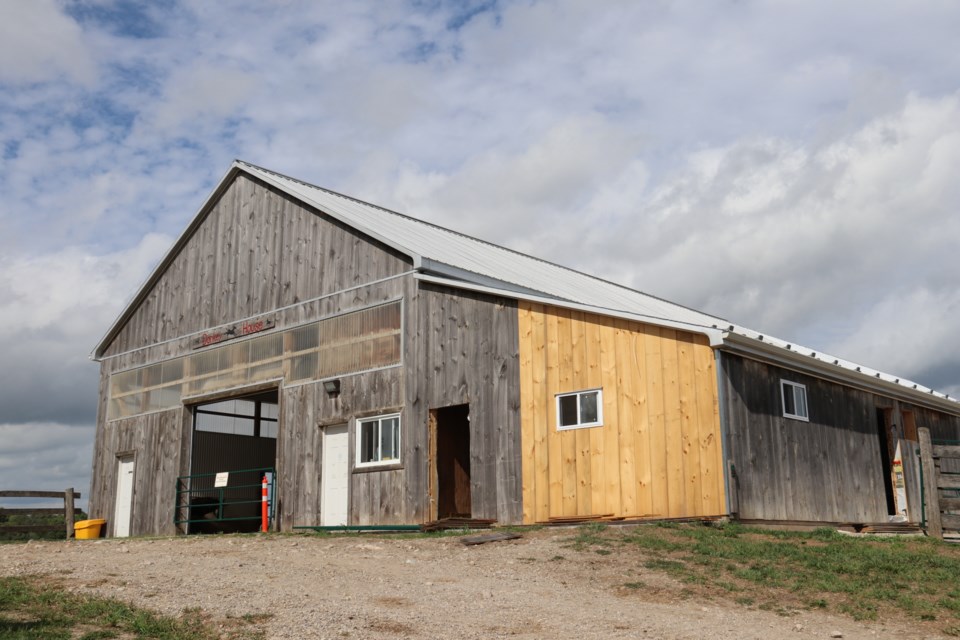PUSLINCH – The Donkey Sanctuary of Canada (DSC) is in the process of “building a better future for the forgotten equine” with a $2.5 million expansion, thanks in large part to a bequest from a loyal donor.
The expansion includes a 4,000 square foot addition to their existing donkey house, and a new 19,000 square foot training and rehabilitation facility to support the specialized training and care that donkeys need.
While the donation won’t pay for everything they need, it did enough to get them started.
“This is legacy giving at its best,” said Lesley Bayne, executive director of the DSC.
The sanctuary has seen a greater number of donkeys coming to them with nowhere else to go. These cases are increasingly complex as a result of neglect, abuse, and abandonment, and things have only gotten worse since the pandemic.
Without the sanctuary, many of these animals would end up shipped off to the meat market.
They are consistently at capacity with 100 donkeys and mules on the farm, and a growing waitlist of 30 donkeys waiting to get in.
The expansion of the donkey house will allow them to house more donkeys, but the training facility will help them speed up the rehabilitation process and train more caretakers for their foster program, which will further increase their capacity.
They currently have 70 donkeys and mules being fostered by farms around Canada. The more animals being fostered, the more they can take on the farm.
But in order to go into the foster program, the animals need to be rehabilitated, as the donkeys and mules that arrive at the sanctuary are often coming from poor conditions, and often feral, and can be a danger to their caretakers.
This process can sometimes take years with their current facility. Since it’s outside, they can’t train when there is snow or rain, or when too many people are around – which is most of the year.
The training facility will allow for year-round training and rehabilitation for aggressive, feral or previously abused donkeys, significantly speeding up the process.
But part of the problem is that there is a lack of information about how to care for donkeys, Bayne said, which is why they are deemed the forgotten equine.
This is why they are including an observational deck for owners and trainers to learn how to train and rehabilitate.
Both the donkey house and the training centre will also have two medical stalls, which will allow them to do medical procedures on-site. The donkey house will also have large stalls to accommodate donkeys who need specialized care.
Having medical treatment rooms in both areas is important because it means the animals don’t have to be moved great distances to get medical treatment – something that can be difficult for caretakers and traumatizing for unrehabilitated donkeys and mules.
“It’s really important for us to be able to do medical work on them here on site. It saves money, but it's also safer. So no trailering, no stress.”
The training facility will also house their 14 mules, who are currently in more of an outdoor space with a heated shelter, as there is no room for them in the donkey house and they can handle the weather, but also because they have different needs than donkeys – for instance, as bigger animals, they need bigger doorways and stalls.
This expansion has been a long time coming. The sanctuary just celebrated 30 years, and for at least the last 10 have known they would need to expand and develop more medical facilities on-site.
“We did years of research into this. We spoke with so many experts,” Bayne said.
Renovations for the donkey house started in May and should be finished sometime in September.
In the meantime, they are still looking for donations to finish the training centre; right now, they have enough to get the prep work done, but not to finish the arena or observation.
You can learn more here.



